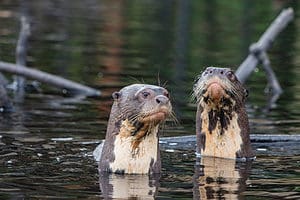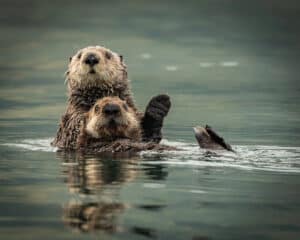Some animals are truly enjoyable to observe. Otters are one example. They are playful and fun to watch when they frolic in bodies of water. When they leave the water, their otter tracks produce distinctive patterns in mud, snow, or whatever substrate they are walking through. Otter tracks are interesting because they tell a lot about the behavior of the animal in addition to its direction of travel. Most of the time, you can tell that the footprints belong to an otter not just because of the prints themselves but also because of other distinguishing markers in the substrates. Keep reading to learn all about otter tracks!
Background Information on Otters
Range and Habitat
River otters live throughout most of North America, in Mexico, the United States, and Canada/Alaska. In addition, they inhabit most environments other than the Arctic and desert areas.
These otters tend to live around the banks of rivers, occupying similar habitats to beavers. They can live in both marine and freshwater environments. River otters can tolerate climates at both hot and cold temperatures, as well as high and low elevations. They prefer clean water with minimal disturbances from humans.
Predators
Even though otters are predators themselves, higher-level predators prey on them. These include killer whales, white sharks, wolves, bald eagles, and brown bears, among others.
Diet
River otters usually eat aquatic animals. Fish and crayfish are the most common, with remnants of these animals being visible in the otter’s feces. They also eat turtles, frogs, insects, and small mammals. They eat a lot during any given day in order to support their high metabolism. As a result, they have tons of energy.
Appearance and Size
Otters have slender bodies with strong necks and short legs with webbed feet. The webbed feet help make them excellent swimmers. Otters also have long flattened tails that help propel them through the water. Their fur is typically some shade of brown, with lighter fur on their undersides.
Otters can vary drastically in size, depending on the species. Asian small-clawed otters weigh 6-7 pounds, while sea otters weigh close to 100 pounds!
However, when most people refer to otters, they are referring specifically to the river otter. River otters typically weigh between 10 and 33 pounds. They are about 2.5 to 5 feet long. Females are usually about one-third of the size of males.
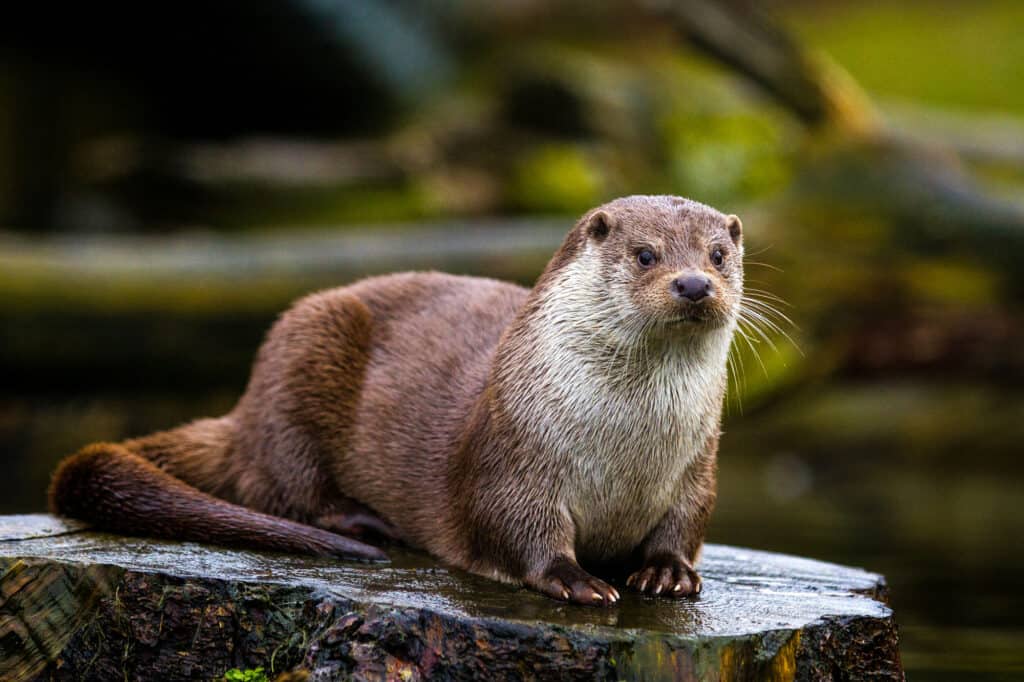
Otters have slender bodies with strong necks and short legs with webbed feet, which make them excellent swimmers.
©iStock.com/Cloudtail_the_Snow_Leopard
River Otter Tracks
| Size | Shape |
| ~3.25 inches wide | Toes are partially webbed and widely spread apart |
| Up to 4 inches long | Tracks are 12-24 inches apart (their typical stride length) |
| Tracks usually show all five toes, but sometimes only four are visible | |
| Large C-shaped pads behind the toes | |
| Sharp claws create the appearance of pointed toes in the tracks |
River otter tracks are typically about 3-1/4 inches wide and up to 4 inches long. The toes are widely spread apart and are partially webbed. Otter tracks are typically about 12 to 24 inches apart, as this is their running stride length.
Otters have five toes on each foot, and these are typically well-defined in their tracks. Sometimes, though, the tracks only show four toes. They also have large C-shaped rear pads. The heel pad is sometimes defined in the tracks as well. The toes in otter tracks often look pointed, indicating the presence of sharp claws.
Otters frequently travel from one body of water to another, looking for food. They often move around streams, creeks, and ditches that lead to lakes and ponds.
Because otters are very playful and social, it’s not uncommon to find multiple sets of otter tracks. They like to run and slide together.
River Otter Tracks in Mud
Perhaps the most complete picture you can get of the actual otter tracks will be in the mud. This is the only substrate where the partial webbing between their toes may be visible in the tracks. Tail dragging is also more visible in muddy environments.
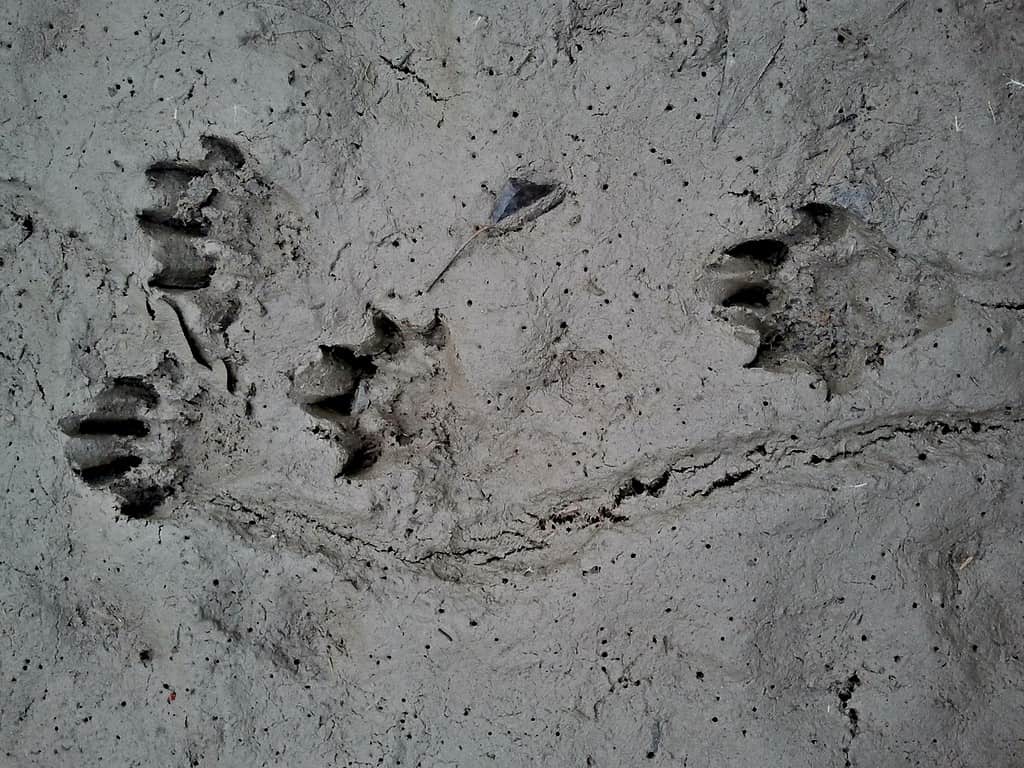
River otter tracks in mud.
©LukasPich/Shutterstock.com
River Otter Tracks in Snow
Although otter tracks may be more well-defined in the mud, you can easily distinguish them in the snow. They tend to slide much more in the snow, as this is actually a preferred way to move when there is a lot of snow on the ground.
Since the slides are one of the most reliable ways to determine that these are indeed otter tracks, the snow might present a more complete picture of all of their movement.
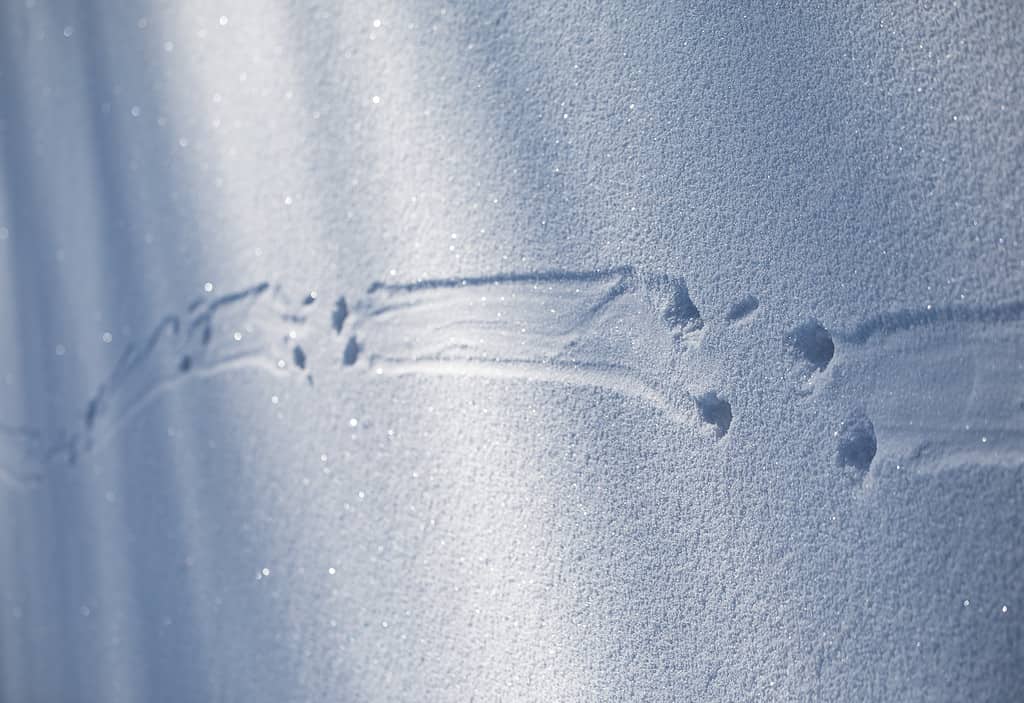
River otter tracks in snow.
©Roland Oster/Shutterstock.com
Distinguishing Markers Appearing Alongside Otter Tracks
Slides
The most well-known way to distinguish otter tracks is slides in mud or snow. This is because they tend to slide on their bellies as they move. On riverbanks, these slides can be up to 8 inches wide, and they can be about a foot wide in the snow. In these cases, you can also see blurred footprints when the otter has pushed itself for momentum.
When otters slide downhill, the slide may keep going without interruptions for long distances. However, if they are sliding on level ground or uphill, slides will likely be punctuated with their tracks as they propel themselves forward.
The tracks of otters and fishers (a closely related mustelid) are very similar, but the slides distinguish the otter tracks. Otters are social and swim and slide quite a bit. In contrast, fishers are solitary, don’t slide often at all, and climb rather than swim.
Groups of Tracks
You are much more likely to see single sets of fisher tracks than evidence of a group running together. Otters like to run and play in groups. Also, trails of otter tracks are more likely to disappear into the water, while those of fisher tracks will disappear at the bottoms of trees instead.
Rolling Around on the Ground
Otters can also roll around in certain areas, particularly along marshes and water edges. You may see flattened areas up to 6.5 feet wide. These areas may also appear to have been raked and scratched. When they do this, they often leave a musky scent. Although you may not be able to detect this scent, the nose of a dog is sensitive enough to pick up on it.
Tail Dragging
Sometimes, otters’ tails will drag on the ground while they are walking. You will see the tail drag along with their tracks.
Otter Scat
Otter poop is also a way to differentiate auto tracks from those of other animals. Usually, when fresh, they are just splats of black matter. However, when they decay, you can see fish scales/bones or the remains of crayfish. The scat also gets lighter over time, looking gray or white after a while. Otter scat has a very similar appearance to raccoon scat, but the tracks left by their feet look different from those of raccoons.
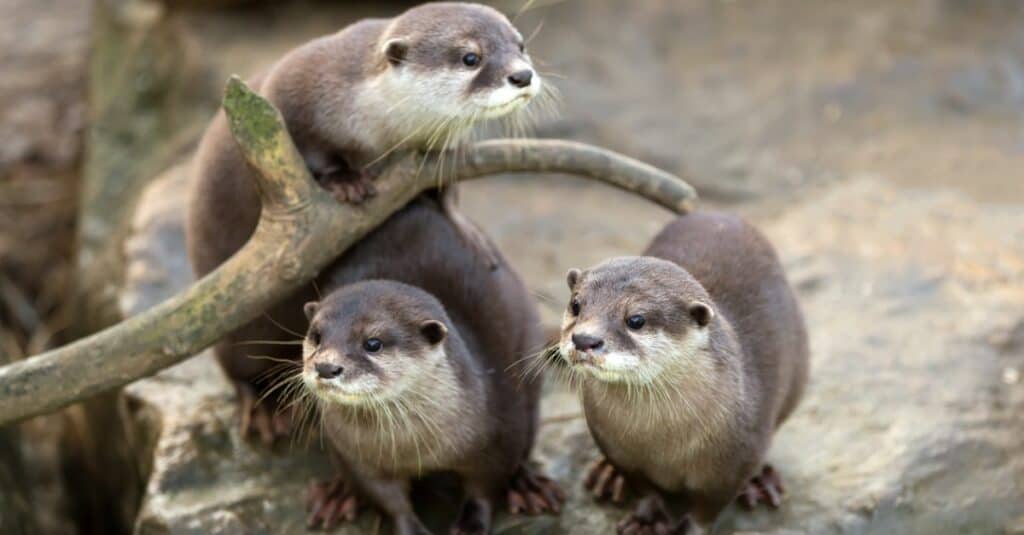
Otters like to run and play in groups.
©iStock.com/Artush
The photo featured at the top of this post is © Tatyana Step/Shutterstock.com
Thank you for reading! Have some feedback for us? Contact the AZ Animals editorial team.



